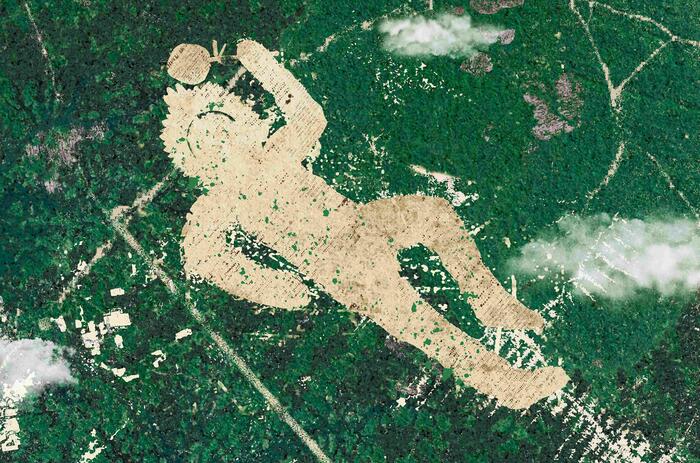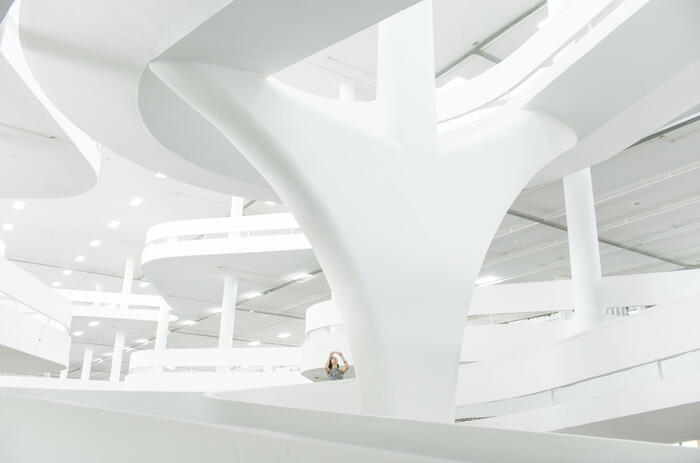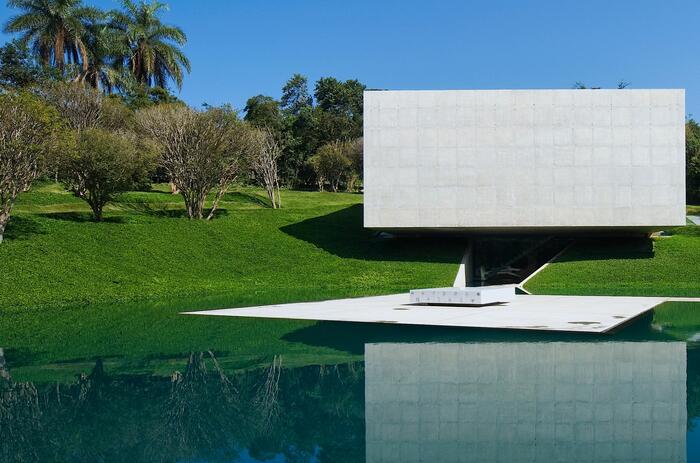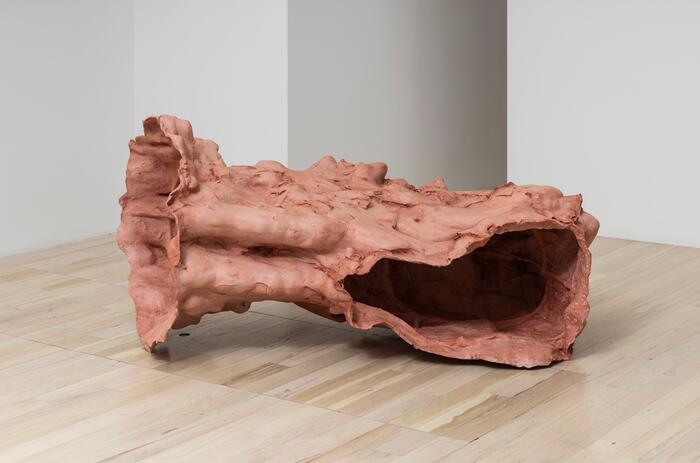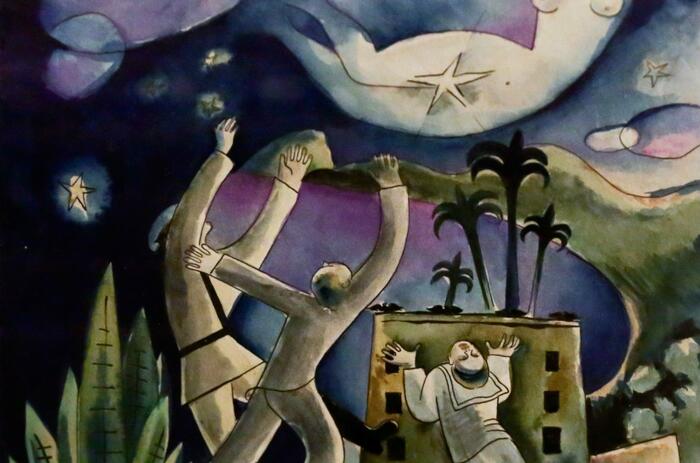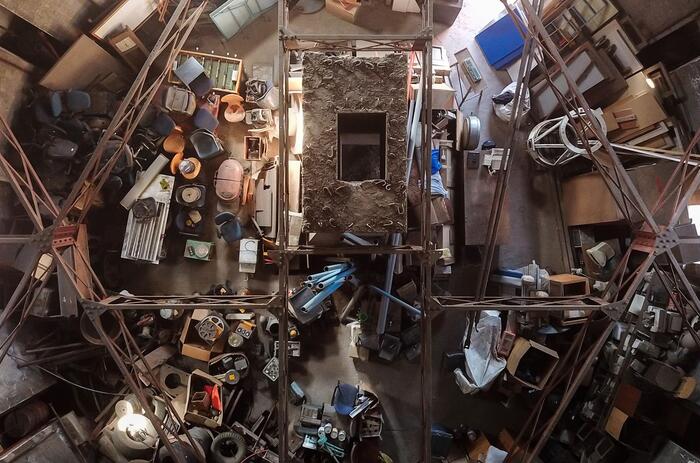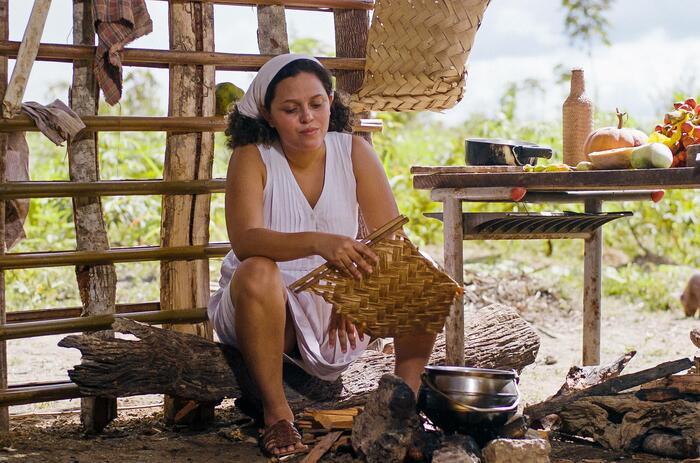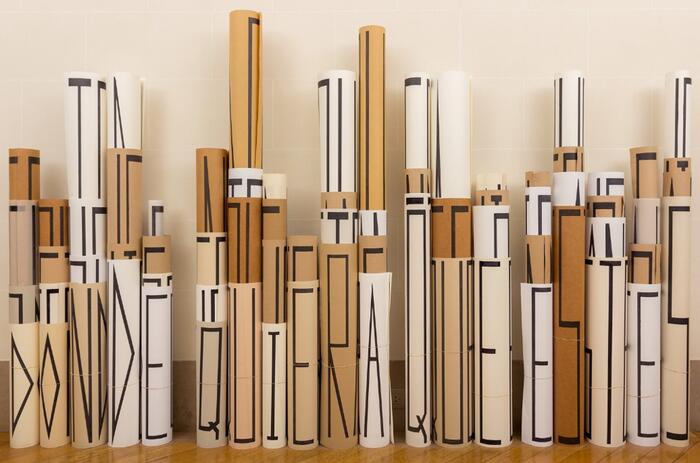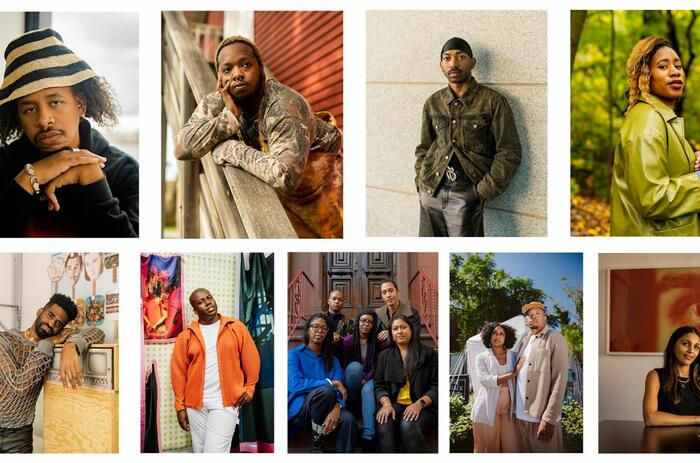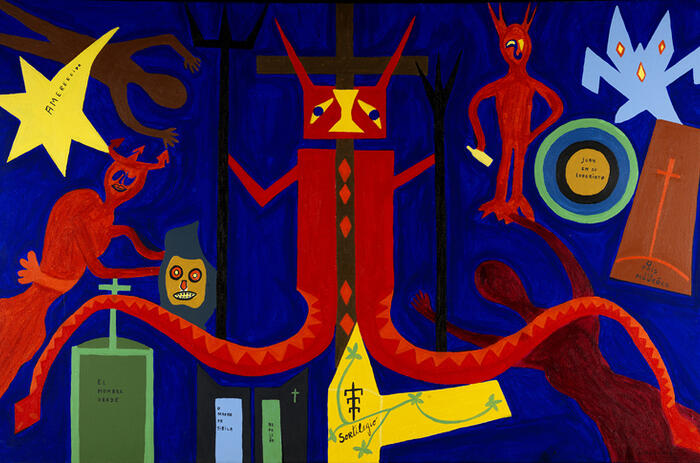SLEEPING EMBAR - 37TH PANORAMA OF BRAZILIAN ART
Somewhat fused forms, in a dismantling that seems continuous, signaling a kind of tired geometry. The banal brilliance of a chromatic automotive cover in what could have been the label of a crumbling and volatile language typical of large urban agglomerations, in a tenuous cross between street art and graffiti.
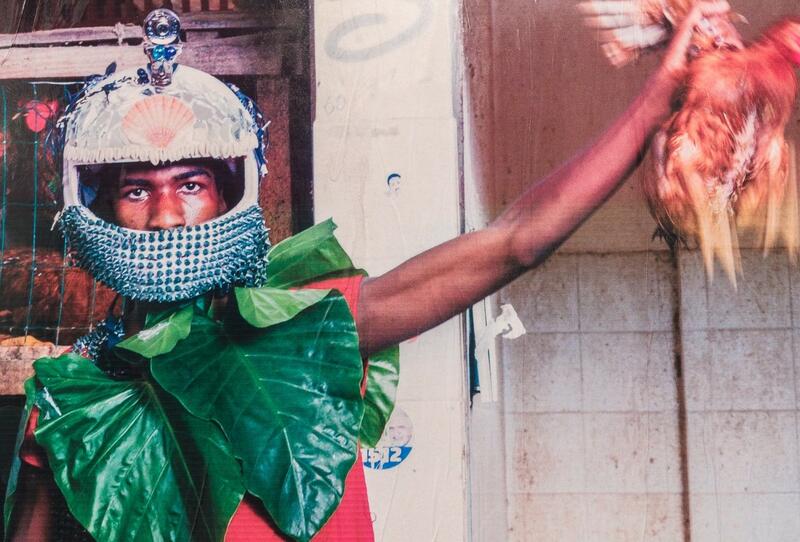
The three-dimensional works of the artist from São Paulo, Luiz 83, central to the great exhibition hall of the MAM-SP (Museum of Modern Art of São Paulo), serve as a summary of the 37th Panorama of Brazilian Art, whose theme was entitled Under theAashes, Embers. A clear indicator of how the Brazilian cultural milieu, whose existence was constantly threatened for almost four years by the ideals of a federal government - averse to public debate and any trace of intellectuality, to say the least - resists, not without losses and defeats, but with a resilience that has proven to be robust.
The continuation of this traditional program that has been changing its profile from time to time -previously, it was dedicated to traditional media; thus, one edition for painting, another for sculpture, etc. - and still tries to draw a snapshot of what is happening in the visual arts in the country at the time it is presented can already be considered a victory.
The protagonism of Luiz 83 has a strong symbolism, since he remained outside the circuit for years, he is black, and his original role in the visual arts was due to an underground activity - the chaotic graphic language of the walls of large Brazilian cities - and little by little got into a more 'official' arc for a great assembling job. There is another relevant fact: one of the curators in the team that heads the exhibition, Claudinei Roberto da Silva, is black, the first, if I am not mistaken, in the successive editions of Panorama with this division of tasks. The team is completed by Cauê Alves, chief curator of the institution, Cristiana Tejo, from Pernambuco, who lives in Lisbon, and Vanessa K. Davidson, from the United States, currently at the Blanton Museum of Art.
Also in the main room of the museum, near Luiz 83, two artists' poetics are strongly inscribed with works with a strong critical tone, but with discreet positions in the contemporary art circuit. Initially, Gustavo Torrezan, born in Piracicaba, in the interior of the State of São Paulo and with a doctorate from Unicamp -a public university also outside the capital and often not so visible in the surrounding institutional networks-, exhibited two three-dimensionals in which the notions of power and the relations of the art system are at odds with each other. The night keeps something of the flag that collapses, of national identity in tatters, and is transmuted from the moment of its placement in the exhibition space. Já Pó, with its stars of the national banner in charcoal gathered in a corner, is more explicit regarding the idea of the failure of great projects and the concept of the 'country of the future'.
Marina Camargo, who lives between Porto Alegre and Berlin, continues her cartographic subversion in América-Látex (Post-Extractivism), a piece in which the lines of the rubber derivate escape, supported by meridians and latitudes of the map of the Americas, a total collapse whose support is very fragile. The poetics of the artist emphasizes the practice of drawing as an idea, as a thought. Thus, the graphics of such a language can have configurations beyond the graphic, overflowing to an extra-field of representation through pencil and paper.
In another highlight, always in the same room, the carioca Maria Laet (more visible on stage, with participation in exhibitions such as the 33rd São Paulo Biennial, in 2018) does her minimal exercises. In them, one finds the use of extremely basic materials from nature and everyday life, which are used in surprising works, such as the photographic series Terra, where she 'sews' lines under the surface of the ground, interweaving processes of performance, drawing and photography.
Two historic lighthouses mark the cut presented in the museum located in Ibirapuera Park. Glauco Rodrigues (1929-2004) was active in printmaking even when he was in his native Rio Grande do Sul in the 1950s. Then he talked about national identity and its symbols. In O Derrubador Brasileiro - D'Après Pedro Américo, Victor Meirelles, Almeida Júnior and Pedro Moraes (1970), the canvas questions how official discourses and narratives are portrayed, even at the time of a rigid military regime in the country, and, at the same time, shares a pictorial pop air, like several colleagues from those years.
The other historical ballast comes from the still little recognized figure of Celeida Tostes (1929-1995). The artist from Rio de Janeiro had a strong didactic role in Parque Lage, a repository of contemporary visuality in Rio de Janeiro, and her work Passagem (1979) makes her essential in a perspective of Brazilian art produced in the leaden years (already analyzed here in Arte al Día). Celeida's telluric poetics open up lines of diverse approaches based on the materials used by today's names. Located in the Paulo Figueiredo room, the work of the artist from Minas Gerais Davi de Jesus do Nascimento is undoubtedly one of the most exciting within this Panorama. Going through different media, such as performance, drawing, video, installation and photography, among others, personal experiences on the banks of the São Francisco River -one of the main watercourses of the Brazilian mainland- address both the most intimate and the economic and sociopolitical conflicts, the consequences of which greatly affect the local environment.
Thus, Panorama da Arte Brasileira, already developed by key curators in Brazil such as Adriano Pedrosa and Paulo Miyada, for example, has in this 37th chapter a very subjective radiography of the visual arts under a spirit of time in strong change. Triggering this phase in the history of this exhibition is in itself a victory. In addition to the artists discussed, almost all the others deserve a close look. Under the aegis of an eroding somewhat developmentalist modernism, eyes may focus more on works by names like Erica Ferrari and Lais Myrrha, as well as, for other reasons, on André Ricardo, Eder Oliveira, and Xadalu. One drawback is that the expography of the paintings, some of which are large, from No Martins have gained the space traditionally reserved for the Corridor Project, that is, with a problematic insufficient setback. And, if Celeida had a good turnout, Glauco's isolated piece could be accompanied by such interesting paintings of the same (and good) variety.
37th Panorama of Brazilian Art - Under the Ashes, Embers
Curators: Cauê Alves, Claudinei Roberto da Silva, Cristiana Tejo and Vanessa K. Davidson
Until January 15th, 2023
MAM-SP (Museum of Modern Art of São Paulo)

